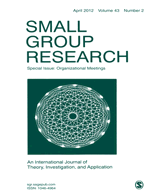I changed my job title to read Group Facilitator, Collaborative Process Advocate, and Storyteller more than ten years ago. While group facilitator and collaborative process advocate are not what I would call widely accepted professional titles (just try finding them in the Yellow Pages), I felt comfortable with them. The one I was uneasy about was storyteller. Still, I sometimes wonder how people react to that string of descriptors.
In an attempt to connect those dots, I crafted the following bio. Rather than a traditional biographical sketch, I put it in the form of a first-person story.My Father was a storyteller. It was his everyday way of communicating important values and ideas. I followed his example, but didn't realize it until several years ago. After leading a three-day training program on group facilitation at the Pentagon, I read the attendee’s evaluation forms. In response to the question, “What did you like best about the program?” several people responded, “Sandy's stories.” I didn't understand what they were talking about so I asked my co-trainer. He looked at me, puzzled, and said, “Don't you remember you told that story about the meeting in the Adirondacks where they insisted they couldn’t reach consensus, and one about the volunteer board of directors where one of them came in late and he had a hangover, and the time the chairman threw the facilitators out of the meeting … ” I realized then that I had told a lot of stories. Since that experience I've told stories more intentionally and formally, and in front of audiences large and small – personal adventures, historical sagas, tall tales, Jewish stories. I am pleased to share my stories with you. Find out more at www.exedes.com/stories/Over those ten years—while I facilitated groups, advised collaborative leaders, and produced three books on group facilitation and collaboration— storytelling grew larger in my professional life. I trademarked the logo to the left and, at professional conferences, led my workshop, “Stories at Work: How to Create, Tell, and Use Stories with Groups and Organizations.” I told stories—true stories—to illustrate a point or respond to questions. Now, I've taken a different turn. Here is a collection of fictional stories, Adirondack Mendel’s Aufruf: Welcome to Chelm’s Pond. I describe it as a mashup of the Chelm fool and Adirondack tall tale, a fusion of Adirondack-Ashkenzick cuisine, and a wonder about the nature of God and the meaning of prayer. Please take a look at the 2½-minute book trailer, view the illustrations on Facebook, and let me know what you think!


















